ANIMALS
30 Weirdest Animals In The World
Published
12 months agoon
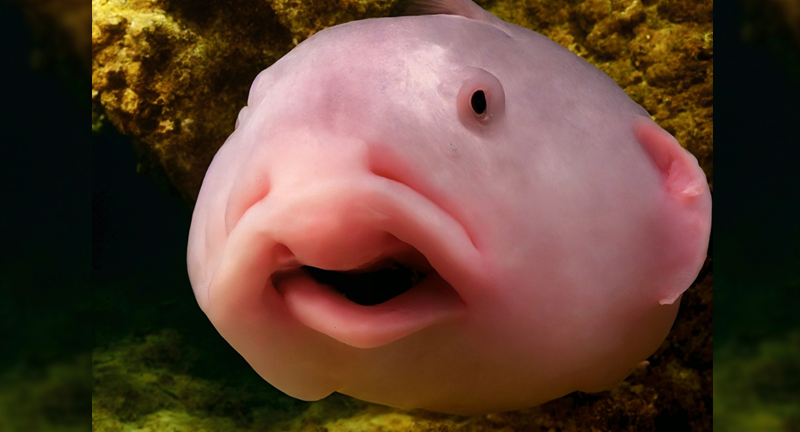
Shutterstock
In the vast canvas of Earth’s biodiversity, a multitude of creatures have emerged, each sculpted by evolution to thrive in their unique habitats. From the darkest depths of the ocean to the lush canopies of rainforests, nature has fashioned organisms with such fantastical traits that they seem almost otherworldly. This compilation showcases 30 of the strangest animals, whose peculiar features and behaviors serve as a testament to the boundless creativity of evolution. From the oddly-shaped blobfish, challenging our perception of fish anatomy, to the mysterious axolotl, retaining its youthful form throughout its life, each specimen beckons us to marvel at the marvels of the natural world and the ingenious survival mechanisms it has forged.
Japanese Spider Crab

Wikipedia
The Japanese Spider Crab boasts the largest leg span of any arthropod, extending up to an impressive 12 feet from claw to claw. Inhabiting the waters around Japan at depths of up to 600 meters, this marine crab utilizes its lengthy limbs to scavenge the sea floor for detritus and organic matter. Despite its intimidating size, the Japanese Spider Crab is renowned for its gentle nature, making it a popular attraction in public aquariums worldwide.
The Blue Dragon

Wikipedia
The Blue Dragon, scientifically known as Glaucus atlanticus, is a stunning sea slug found in oceans globally. This small creature floats upside down, utilizing water surface tension, and feeds on venomous jellyfish, storing their toxins as a defense mechanism. Its vivid blue hue provides effective camouflage against the ocean’s backdrop, offering protection from both predators and prey. The Blue Dragon’s remarkable adaptation to utilize the venom of its prey showcases the intricate interplay of evolutionary strategies in the natural world.
Aye-aye
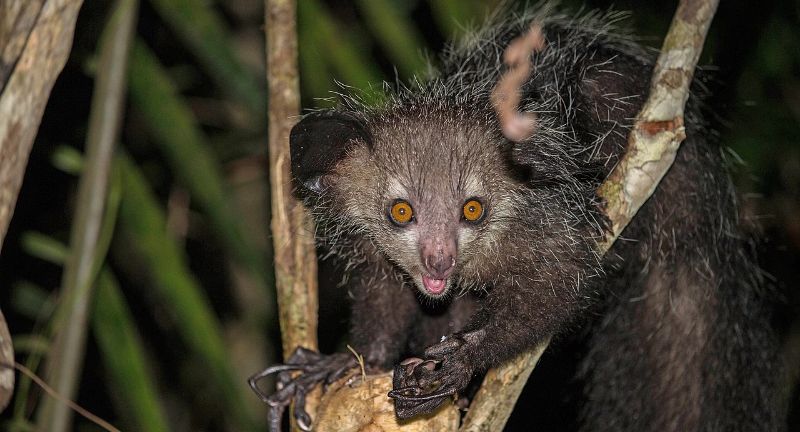
Wikipedia
The Aye-aye, a nocturnal primate native to Madagascar, possesses distinctive features tailored for its unique foraging behavior. With large eyes adapted for night vision and a remarkably elongated middle finger, it employs a specialized technique known as percussive foraging to locate and extract insects from trees. Despite its fascinating adaptations, the Aye-aye faces conservation challenges due to cultural superstitions in Madagascar associating it with bad luck. Revered for its peculiar appearance and extraordinary feeding habits, the Aye-aye stands out as one of the most peculiar and enigmatic primates on the planet.
Tufted Deer
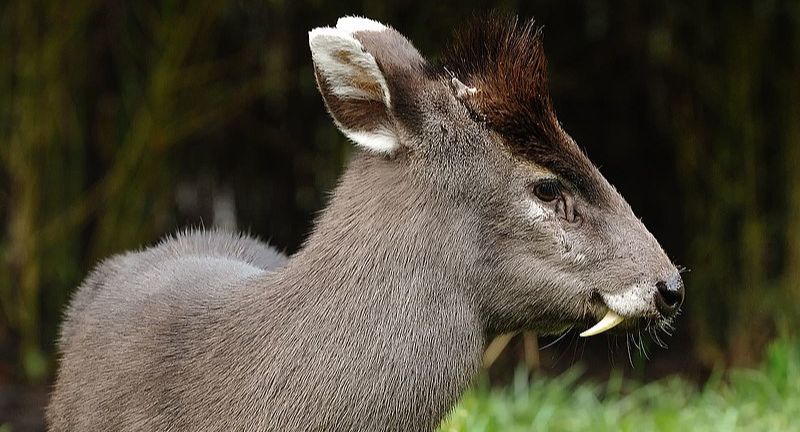
Wikipedia
The Tufted Deer, a small species native to China and Myanmar, stands out with its prominent tuft of black hair on the forehead and striking fang-like upper canines. Preferring solitary habits and dense vegetation for concealment, it roams forests and grasslands, feeding on leaves, twigs, and fruits. Despite its captivating features, the Tufted Deer remains elusive, adding to its allure as a rarely encountered creature of the wild.
Axolotl
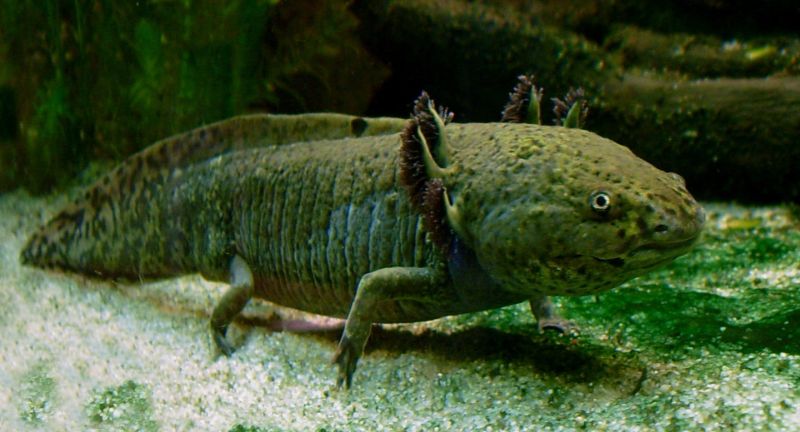
Wikipedia
The Axolotl, a unique salamander native to the lake complex of Xochimilco near Mexico City, exhibits a rare condition called neoteny, retaining its larval features into adulthood, including external gills and a dorsal fin. Renowned for their remarkable ability to regenerate lost body parts, axolotls have become subjects of extensive scientific research on regeneration. However, their critical status in the wild due to habitat loss, pollution, and invasive species underscores the urgent need for conservation efforts to protect this fascinating species.
Blobfish
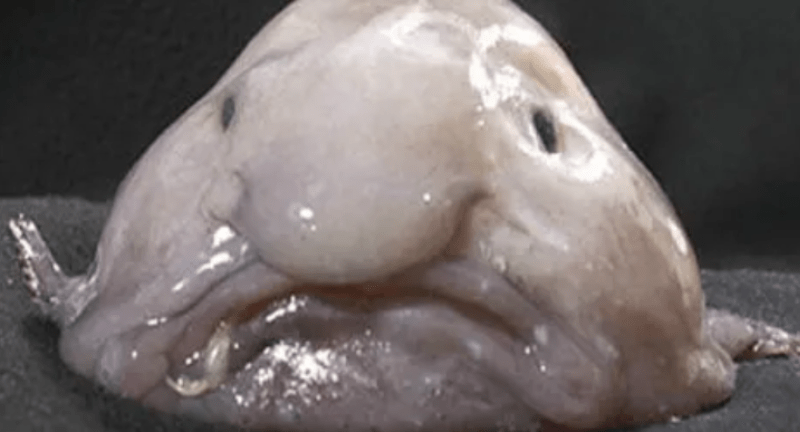
Wikipedia
The Blobfish, found in the deep waters off the coasts of Australia, Tasmania, and New Zealand, has a unique adaptation to its extreme environment, with a gelatinous body that allows it to float above the sea floor. When brought to the surface, its appearance changes dramatically due to decompression damage, making it look deflated and blob-like. Despite being voted the world’s ugliest animal, the Blobfish has become a symbol for deep-sea conservation efforts, raising awareness about the importance of protecting these unique marine ecosystems.
Pangolin
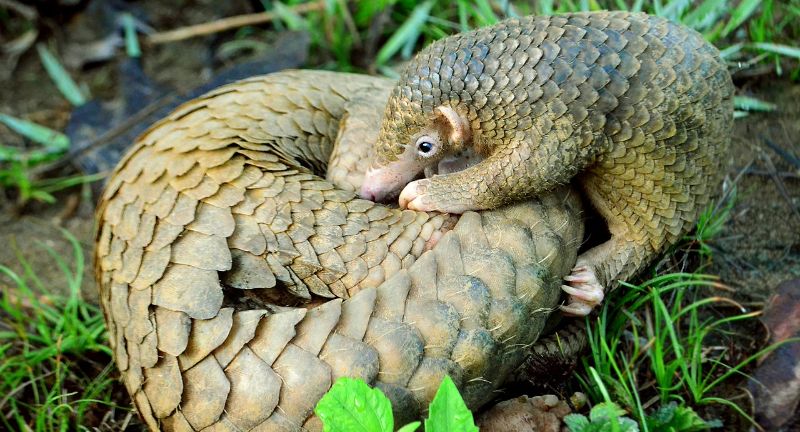
Wikipedia
Pangolins, also known as scaly anteaters, are distinctive mammals adorned with tough keratin scales, serving as protection against predators. Nocturnal and solitary, they specialize in feeding on ants and termites, employing their long, adhesive tongues to extract prey from nests. Despite their elusive nature, pangolins face a dire threat from rampant trafficking driven by demand for their scales and meat, posing a significant risk to their survival in the wild.
Dumbo Octopus
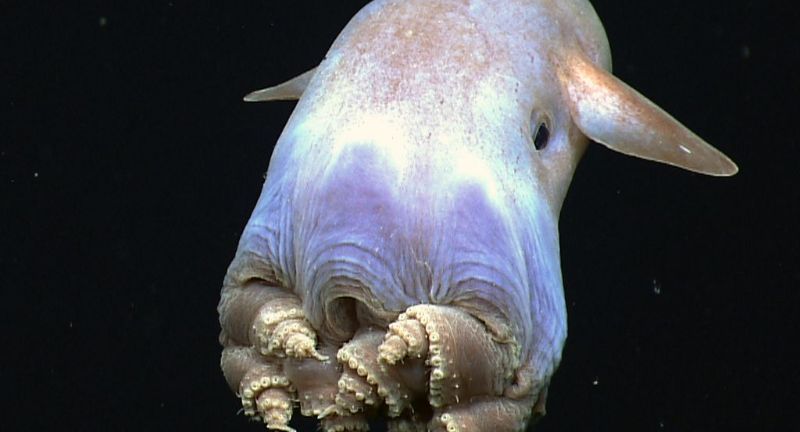
Wikipedia
The Dumbo Octopus, aptly named for its ear-like fins reminiscent of the Disney character, resides in the deep ocean at staggering depths of up to 7,000 meters. With a diet primarily comprising crustaceans and benthic worms, these elusive creatures navigate the ocean floor in search of prey. Their ability to hover and gracefully move through the water, aided by their distinctive fins, adds to their enigmatic charm and fascination.
Goblin Shark
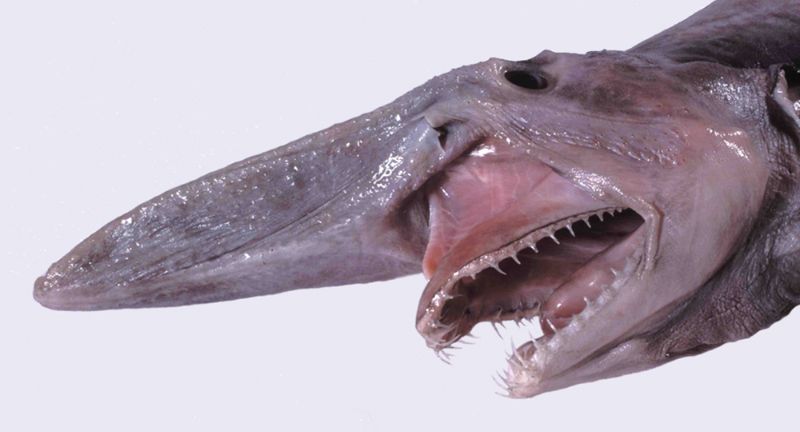
Wikipedia
The Goblin Shark, a rare deep-sea species, stands out for its unique features, including an elongated snout and the ability to protrude its jaws to catch prey. Inhabiting the depths off the coasts of Japan, the Gulf of Mexico, and other regions globally, this prehistoric-looking shark remains elusive due to its deep-sea habitat. Its pinkish skin and sluggish movements add to its mysterious and goblin-like appearance, captivating the imagination of marine biologists and enthusiasts alike.
Proboscis Monkey
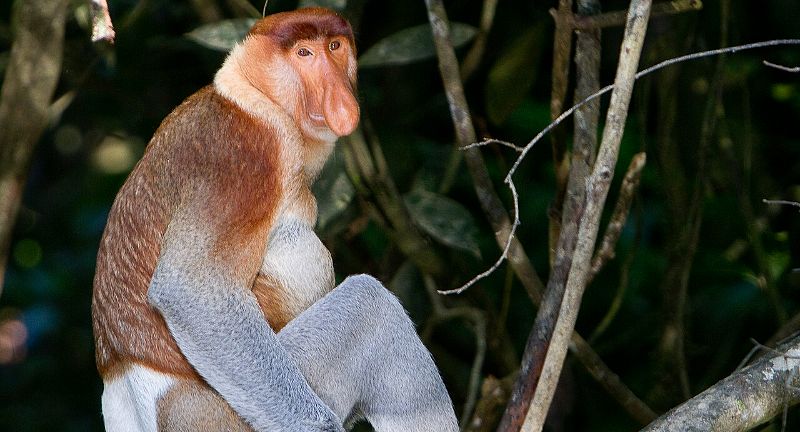
Wikipedia
The Proboscis Monkey, distinguished by the male’s prominent bulbous nose, is native to the mangrove forests and coastal regions of Borneo. Their distinctive nose is believed to serve in attracting mates and amplifying vocalizations. Adapted for life in their watery habitat, these primates are adept swimmers, aided by their webbed feet, and their diet primarily consists of leaves, fruits, and seeds, reflecting their unique digestive system. With habitat loss posing a significant threat and population numbers declining, conservation efforts are vital for the survival of this remarkable species.
Leafy Seadragon
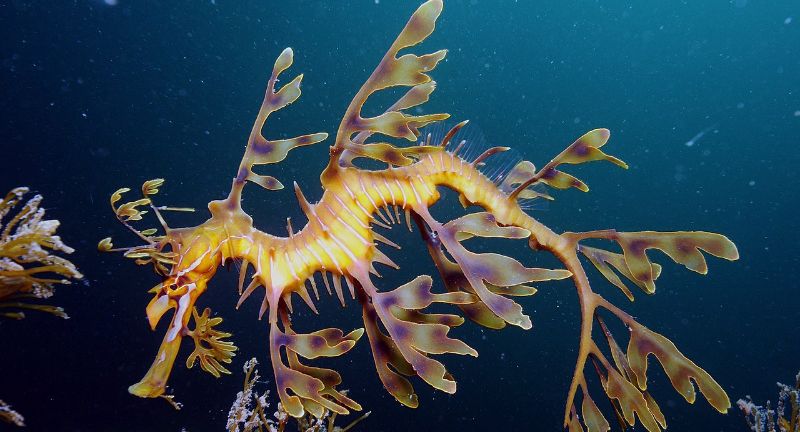
Wikipedia
The Leafy Seadragon, native to the southern and western coasts of Australia, is a marine fish renowned for its remarkable camouflage, closely resembling floating seaweed or kelp. This disguise helps it evade predators by blending seamlessly into its surroundings. Despite its delicate appearance, the Leafy Seadragon is a carnivorous predator, using its long, pipe-like snout to suck in small crustaceans and plankton. Conservation efforts are underway to safeguard this enchanting species from threats such as habitat loss and pollution, ensuring its continued existence in the world’s oceans.
Saiga Antelope
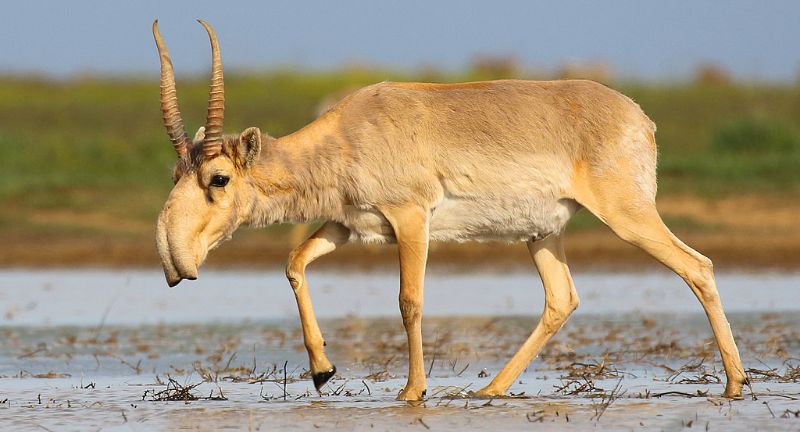
Wikipedia
The Saiga Antelope, once abundant across the Eurasian steppe, possesses a unique and oversized nose structure that serves multiple functions, including filtering dust and regulating air temperature. Sadly, the species has experienced a significant population decline due to factors like hunting and habitat loss. The distinctive nose of the saiga also aids in enhancing vocalizations during the mating season, playing a crucial role in reproduction. Conservation efforts are underway to combat poaching and restore the habitat of this remarkable antelope species, ensuring its survival for future generations.
Vampire Squid
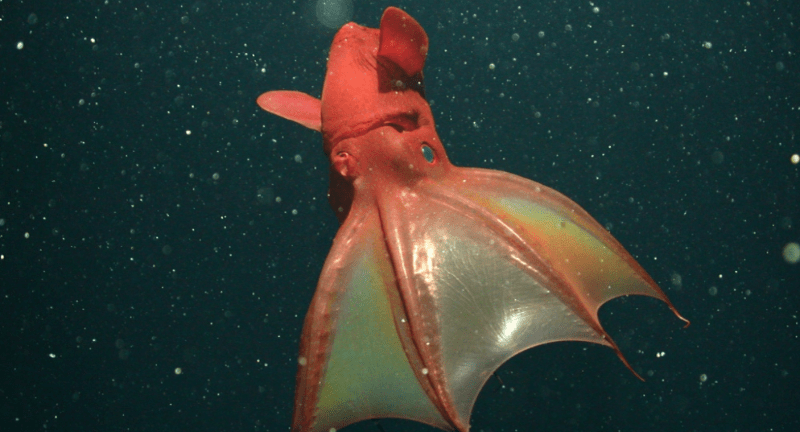
MBARI
The Vampire Squid, residing in the deep, oxygen-depleted regions of tropical and subtropical oceans, boasts a striking appearance reminiscent of a dark cloak adorned with light-producing organs. Despite its ominous name, this squid sustains itself primarily on detritus, employing filamentous tentacles to capture particles from the water column. Remarkably, it can invert its cape, enveloping itself in bioluminescent mucus as a defense mechanism against predators. The Vampire Squid’s resilience and specialized adaptations to thrive in the harsh conditions of the deep sea highlight its remarkable survival strategies in one of Earth’s most extreme environments.
Glass Frog
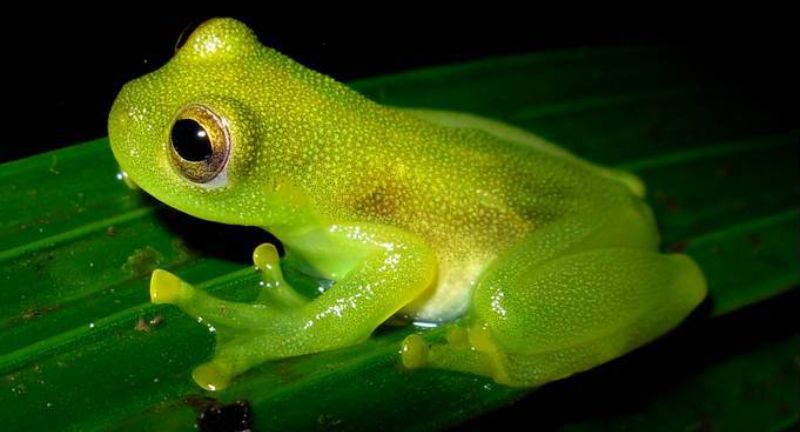
Wikipedia
Glass Frogs, aptly named for their translucent skin, hail from the lush rainforests of Central and South America, where they dwell among the foliage, often concealed by their green hue. Their remarkable feature of revealing internal organs, including the heart, liver, and digestive tract, through their ventral side offers a captivating glimpse into their physiology. This adaptation is believed to aid in camouflage, rendering them less conspicuous to predators lurking below, showcasing nature’s ingenuity in the intricate dance of survival.
Mata Mata Turtle

Wikipedia
The Mata Mata Turtle, inhabiting the tranquil waters of South American rivers and swamps, is renowned for its flattened body and leaf-like appearance, a masterful adaptation for blending into aquatic vegetation. Its stealthy ambush tactics, coupled with a lightning-fast strike and suction feeding method, allow it to capture unsuspecting fish prey with remarkable efficiency. This unique turtle’s camouflage prowess and specialized hunting strategy not only make it a captivating subject of scientific inquiry but also a coveted choice among enthusiasts of exotic pets.
Kiwi
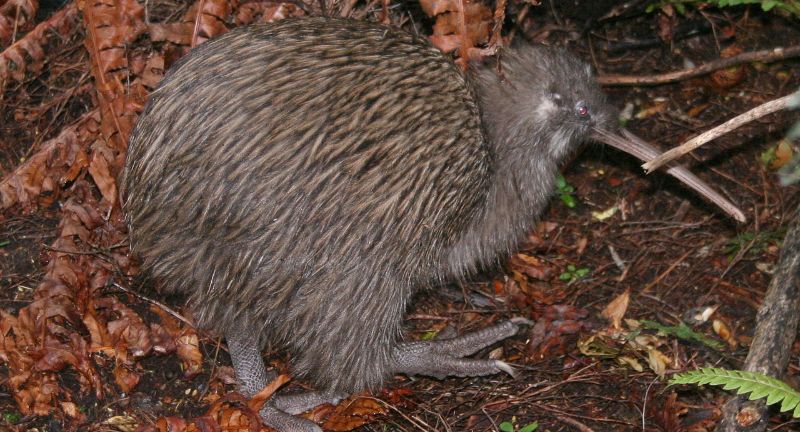
Wikipedia
The Kiwi, a distinctive bird indigenous to New Zealand, boasts a diminutive stature, an elongated beak, and a coat of brown, hair-like feathers. This flightless avian species relies on its keen sense of smell to scavenge for insects and worms under the cover of darkness. Revered as a national symbol of New Zealand, the kiwi holds significant cultural importance, and concerted conservation endeavors are essential to safeguarding its dwindling populations from further decline.
Platypus
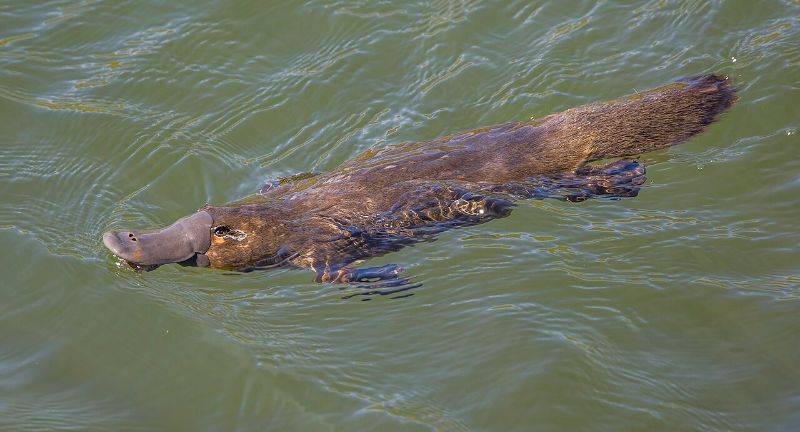
Wikipedia
The Platypus, endemic to eastern Australia and Tasmania, stands out as one of the rare mammals that lay eggs, boasting a curious blend of features including a duck-like bill, webbed feet, and a beaver-like tail. Remarkably, the male platypus possesses a venomous spur on its hind foot, serving as a potent defense mechanism against predators and potential threats. Additionally, its remarkable electrolocation abilities enable it to locate prey underwater with precision, underscoring the species’ remarkable evolutionary adaptations for survival.
Tardigrades
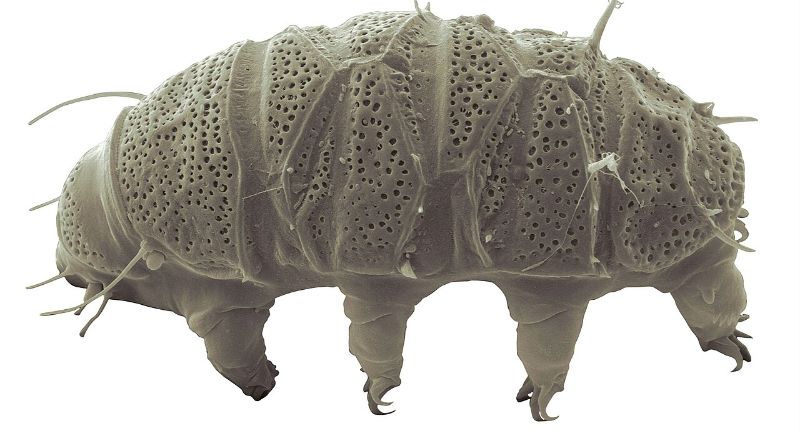
Wikipedia
Tardigrades, commonly known as water bears, are microscopic organisms celebrated for their unparalleled resilience. Capable of surviving extreme conditions such as near absolute zero temperatures, radiation, the vacuum of space, and immense pressures, they defy the limits of what life can endure. Found in diverse habitats worldwide, from mountain peaks to deep-sea trenches, tardigrades possess the remarkable ability to enter a cryptobiotic state, effectively pausing their metabolism and enabling them to thrive in otherwise hostile environments.
Yeti Crab
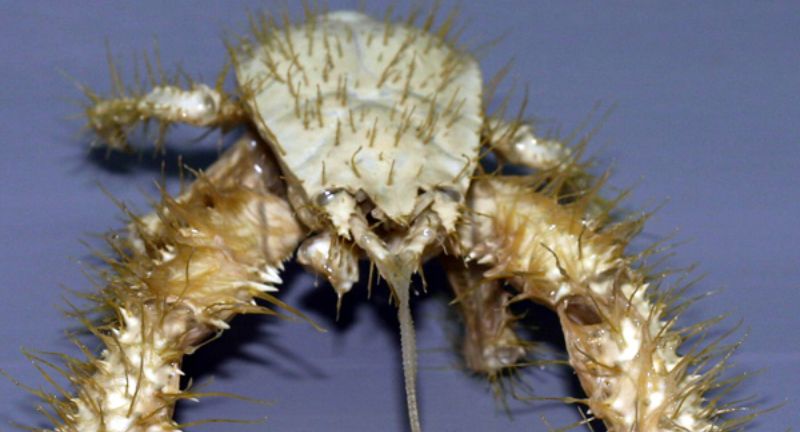
Wikipedia
The Yeti Crab, a remarkable species of deep-sea crustacean found near hydrothermal vents, boasts a striking appearance with its body adorned in a dense layer of hair-like setae. These setae are thought to aid in detoxifying the toxic minerals present in the vent waters, while the crab employs them as a substrate for farming bacteria, which serve as its primary food source. Using its specialized feeding behavior of waving its arms in the vent waters to cultivate these microscopic crops, the Yeti Crab demonstrates an extraordinary adaptation to thrive in the extreme conditions of the deep sea.
Red-lipped Batfish
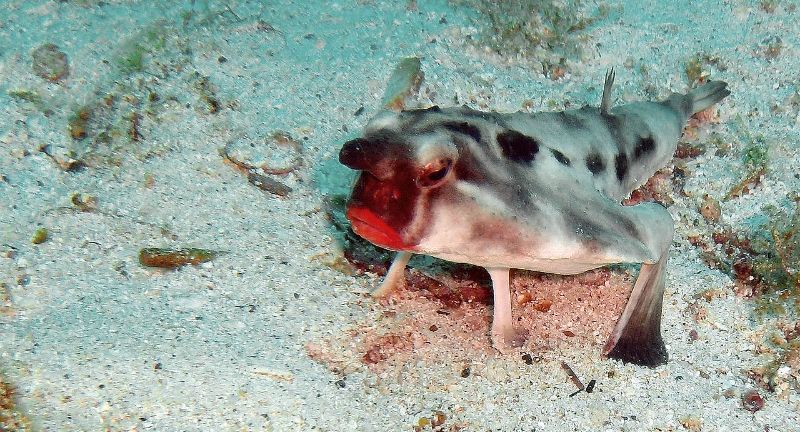
Wikipedia
The Red-lipped Batfish, notable for its vibrant red lips and atypical mode of movement, opts to “walk” across the ocean floor using its modified fins instead of swimming. Indigenous to the waters surrounding the Galapagos Islands, this species is characterized by its limited swimming abilities, relying on its pectoral fins for locomotion along the seabed. It sustains itself on a diet comprising small fish and invertebrates, attracting prey with a bait-like extension on its head. With its distinct appearance and unconventional behavior, the Red-lipped Batfish stands out as a fascinating anomaly within the realm of marine life.
Narwhal
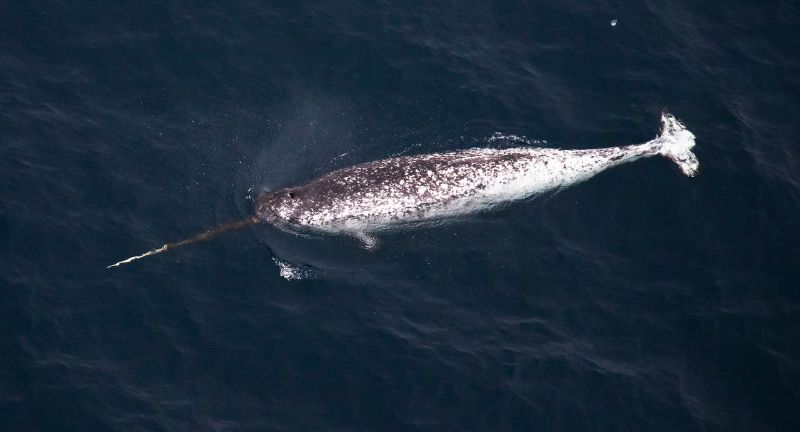
Wikipedia
Narwhals, Arctic whales distinguished by their long, spiral tusks, possess a remarkable adaptation in the form of an elongated upper left canine. These tusks, which can extend up to 10 feet, are believed to serve roles in mating displays and social hierarchies among males. Inhabiting the frigid waters of the Arctic near Greenland, Canada, and Russia, narwhals have captivated both scientists and the public with their enigmatic tusks and unique adaptations to their icy habitat, earning them a place in folklore and ongoing scientific study.
Pink Fairy Armadillo
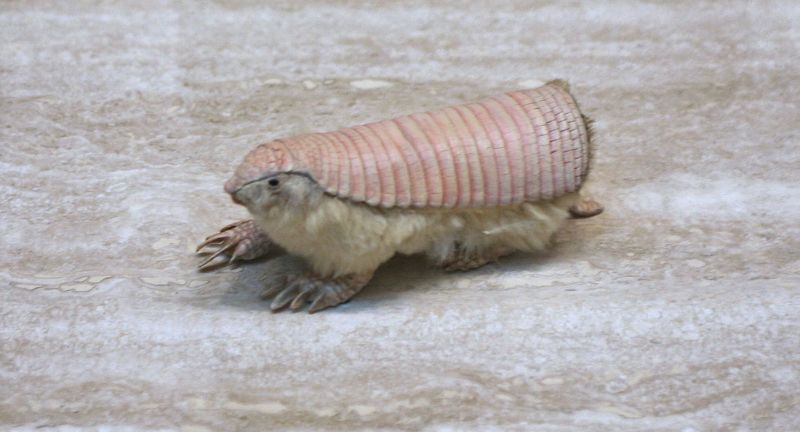
Wikipedia
The Pink Fairy Armadillo, renowned as the tiniest among armadillo species, inhabits the sandy expanses and dunes of central Argentina, its delicate pink shell and diminutive stature adding to its enchanting allure. Preferring the cover of darkness, it employs its robust claws to tunnel into the earth, subsisting predominantly on ants and larvae. However, its elusiveness and the degradation of its habitat render the Pink Fairy Armadillo a species at risk, highlighting the imperative for conservation efforts.
Sunda Colugo
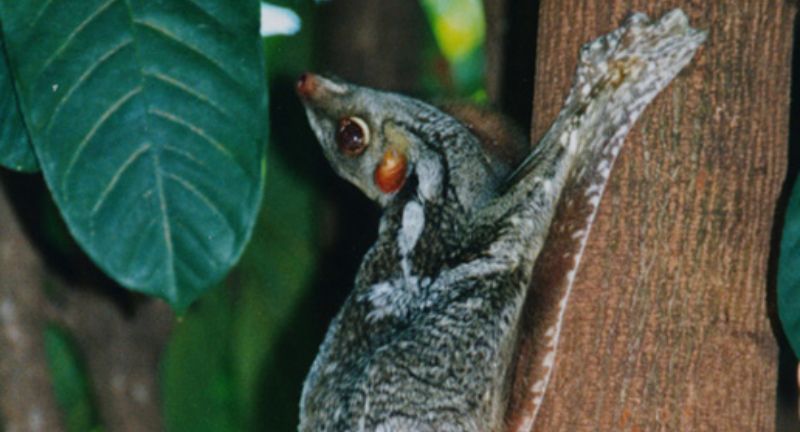
Wikipedia
The Sunda Colugo, commonly referred to as the flying lemur despite its distant relation to true lemurs, is a remarkable gliding mammal endemic to Southeast Asia. Equipped with a substantial gliding membrane spanning between its limbs, it gracefully traverses the forest canopy, covering distances exceeding 100 meters between trees. As a nocturnal herbivore, it sustains itself on tender plant materials such as leaves, flowers, and fruits, its gliding prowess making it an indispensable component of the intricate tapestry of tropical forests and contributing to their rich biodiversity.
Hairy Frog
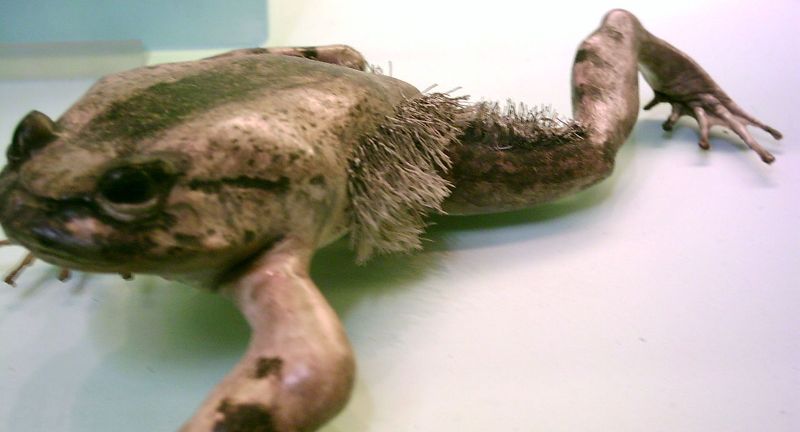
Wikipedia
The Hairy Frog, also dubbed the horror frog or Wolverine frog, boasts peculiar adaptations that set it apart in the amphibian world. Native to Central Africa, this frog’s “hairy” appearance is due to dermal papillae containing blood vessels, aiding in oxygen uptake. Its extraordinary defense mechanism involves breaking its own toe bones to produce claws that puncture through the skin when threatened, retracting them once the danger has passed. This unique combination of features makes the Hairy Frog a fascinating and enigmatic creature in the animal kingdom.
Sarcastic Fringehead
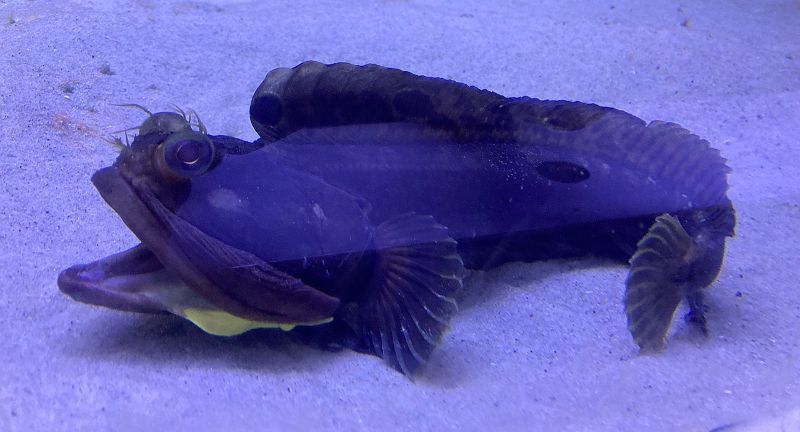
Wikipedia
The Sarcastic Fringehead, a small yet fiercely territorial fish residing off the coast of California, showcases its aggression through a remarkable display of its large, colorful mouth when threatened or in battles for dominance. This expansive and intimidating mouth display serves as a deterrent to predators and rivals alike, earning it its distinctive name. Marine biologists and enthusiasts alike are intrigued by this unusual behavior, adding to the intrigue and amusement surrounding the Sarcastic Fringehead in the underwater world.
Hooded Seal
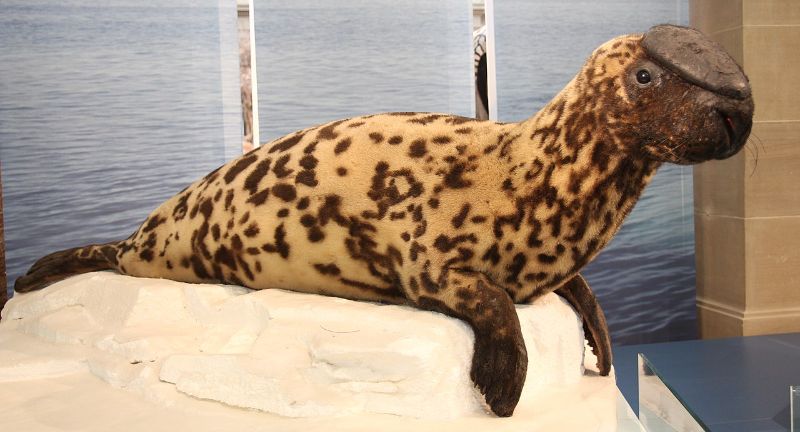
Wikipedia
The Hooded Seal stands out for the impressive inflatable nasal cavity on males, utilized during mating displays in the central and western North Atlantic. With a pelagic lifestyle, these seals predominantly inhabit the open ocean, preying on fish, squid, and shrimp with their adept deep-diving skills. Their distinctive mating rituals and remarkable diving abilities continue to intrigue researchers, shedding light on the unique adaptations of these marine mammals.
Snub-nosed Monkeys
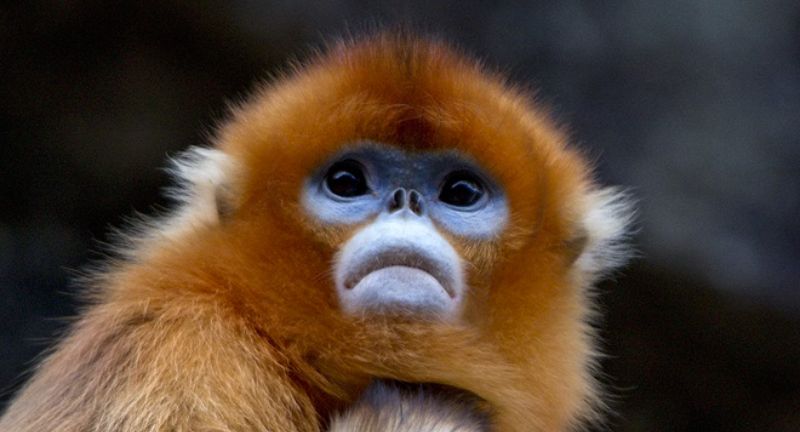
Wikipedia
Snub-nosed Monkeys, distinguished by their colorful faces and upturned noses shrouded in skin flaps, inhabit high-altitude forests across Asia. Their intricate social structures and diet, rich in leaves, fruits, and seeds, reflect their adaptation to these environments. Notably, their ability to grow thicker fur in winter underscores their remarkable evolutionary journey in coping with cold climates.
Wrinkle-faced Bat
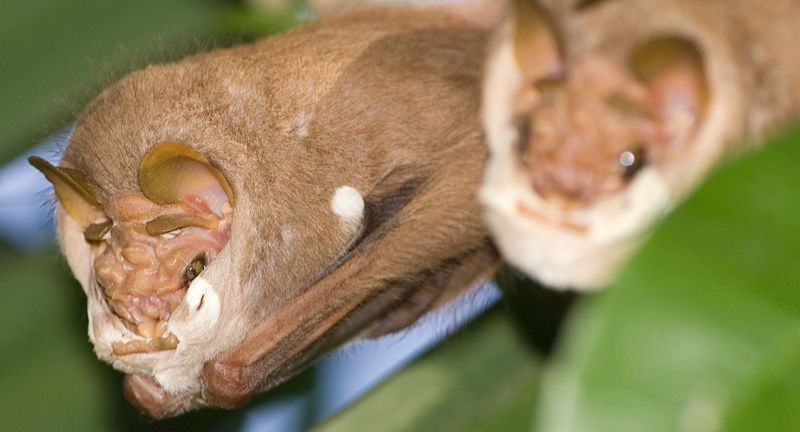
Wikipedia
The Wrinkle-faced Bat, known for its distinctively wrinkled visage, is believed to utilize this feature to enhance echolocation abilities. These bats are native to Central and South America, where they inhabit tropical forests. Males possess a specialized facial flap, likely used in courtship displays. Their diet primarily consists of fruits, making them important contributors to seed dispersal in their ecosystems.
The Gerenuk
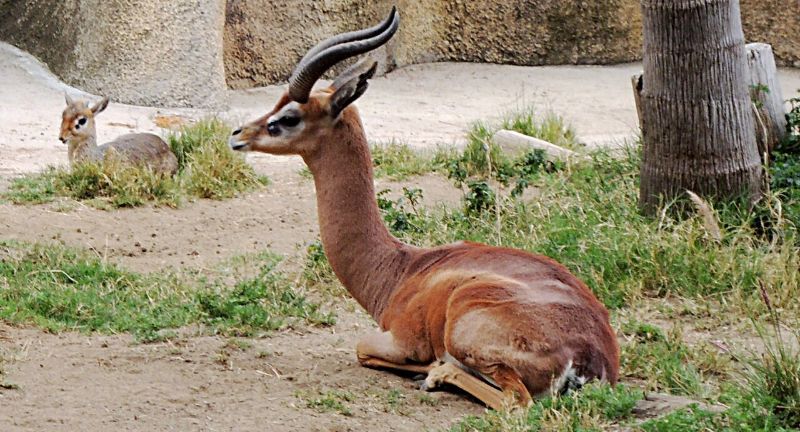
Wikipedia
The Gerenuk, also referred to as the Giraffe Gazelle, possesses an elongated neck and limbs, enabling it to reach high branches inaccessible to other grazers. Native to the Horn of Africa and parts of East Africa, it inhabits semi-arid regions and savannas. Feeding primarily on leaves, shoots, and thorns, the Gerenuk uses its elongated neck and lips to navigate around thorny vegetation. Its unique feeding behavior and appearance distinguish it as a remarkable species among antelopes.
Star-nosed Mole
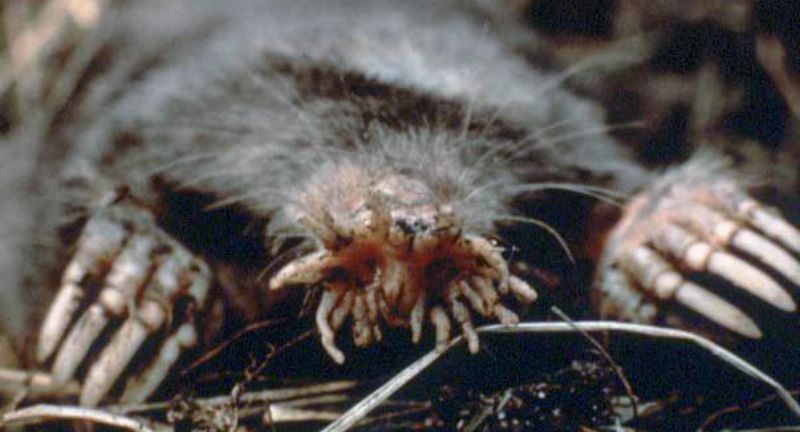
Wikipedia
The Star-nosed Mole possesses a distinctive star-shaped organ with 22 fleshy tentacles at the tip of its snout, serving as a touch organ to detect prey in soil or water. This mole is one of the fastest eaters in the animal kingdom, capable of identifying and consuming food in a fraction of a second. It inhabits wet lowland areas in North America, where it constructs intricate tunnel systems. The remarkable sensory capabilities of the Star-nosed Mole enable it to navigate and hunt effectively in complete darkness, rendering it a captivating subject for neurological and behavioral research.
Conclusion
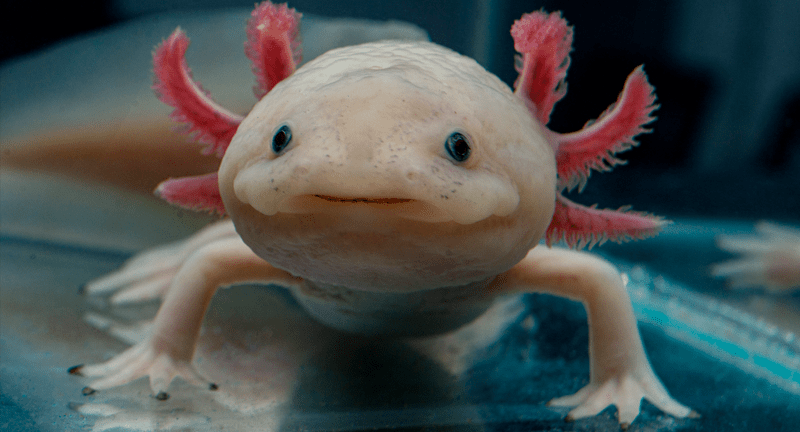
iStock
As we conclude our exploration of Earth’s most peculiar inhabitants, we are reminded of the boundless diversity and marvels of the natural world. These 30 weird and wonderful creatures showcase the remarkable creativity of evolution and highlight the critical importance of biodiversity conservation. Through understanding and appreciating the oddities of nature, we gain insights into the resilience and adaptability of life itself. In recognizing our interconnectedness with these unique beings and their habitats, we are compelled to embrace a sense of wonder and responsibility. It is incumbent upon us to cherish and protect the natural world for future generations, ensuring that these living marvels continue to thrive. Let us carry forward this reverence and commitment, inspired by the beauty and complexity of our planet’s extraordinary inhabitants.
More Amazing Animals+
-


18 Cool Facts About Reindeer That Go Beyond Santa’s Sleigh!
-


27 Animals That Mate For Life
-


Why Giraffes Are Actually So Scary
-


20 Fun Facts About Giraffes
-


These are the snacks experts say cats are really into…
-
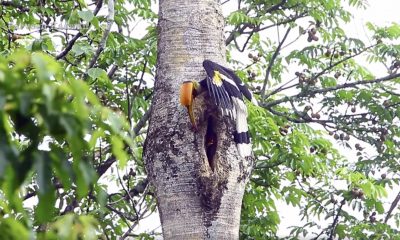

The most beautiful thing you will watch today. Great #Hornbill…
-
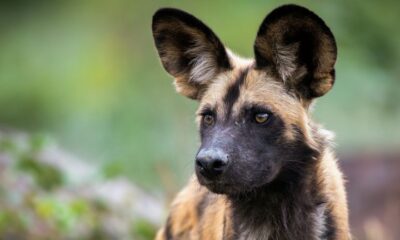

21 Animals That Are Considered Stone Cold Killers
-
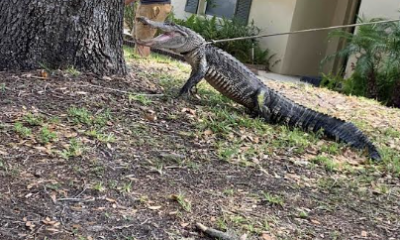

An Alligator Causing Havoc In Florida Woman’s Yard is Finally…
-
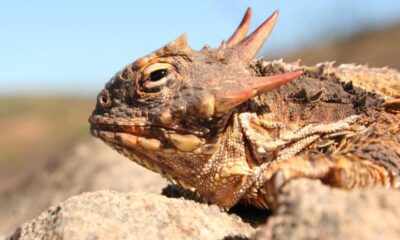

24 Animals That Have The Strangest Defense Mechanisms
-
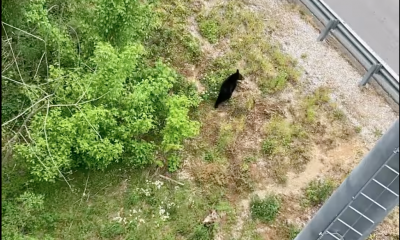

Bear sightings from the Anakeesta Chairlift! #WildBears #MomandCubs
-


Giant panda celebrates first birthday with special cake at zoo…
-
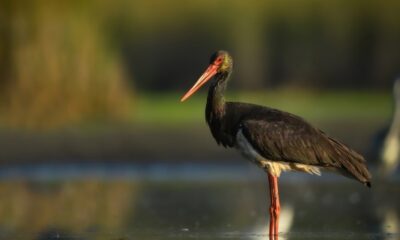

The Truth About Storks and Baby Deliveries
